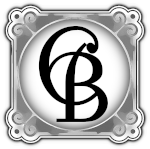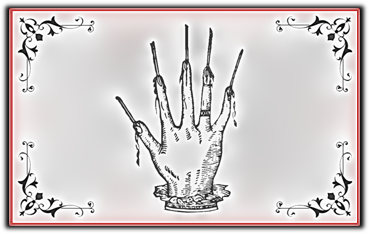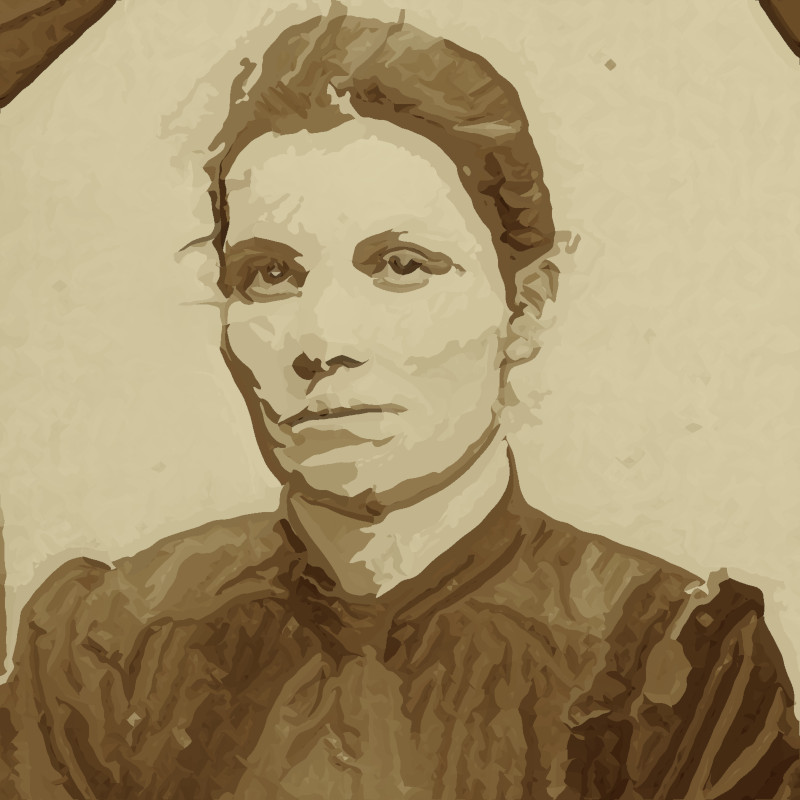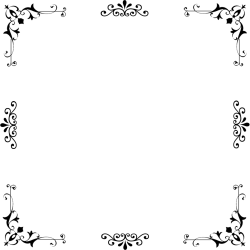





Collette Bowyer

COLLETTE BOWYER – A BRIEF BIOGRAPHY
BURNING HAND RECORD #273827
2/2/1967 Babineaux
Editor’s Note
It is with a feeling of honour that I find myself writing a history of one of the great figures of our time, Collette Bowyer. In keeping with the tenets of the Burning Hand, I have stayed away from some of the more outlandish reports of her life. (These will appear in a later addition.)



EARLY LIFE
Collette Pickering was born on the 13th June 1861. Her father, Richard, was a moderately wealthy industrialist, and she spent her early years in the family home in Manchester. She was doted on by her mother, Eleanor, and it was from her that Collette developed a love for learning. Eleanor Pickering was something of a remarkable woman in her own right; intelligent and encouraged to pursue an education by her enlightened husband, Eleanor was equally encouraging with her daughter. Collette was schooled by her mother from an early age, and by all accounts could read and write from a very young age.
As a child, Collette received her education at home, from governesses and tutors who were hand-picked by her mother. By the age of ten, she was proficient in the piano and the clarinet. By the age of thirteen, she was fluent in French and German. Her love of reading continued throughout her adolescence, and she devoured the modern works of fiction with gusto.

MARRIAGE
At the age of 20, Collette was a vivacious young woman who yearned to see the world. She was introduced to Stephen Bowyer whilst holidaying in Bath, and the young man was immediately taken with her. He wooed her during the Summer of 1881 and made repeated trips to Manchester from his home in London. They were married in December of that same year.
Stephen’s family were big in shipping, and he was able to buy a large house for Collette close to Regent’s Park in London. They travelled extensively during the first two years of their marriage, conducting a grand tour of Europe before venturing as far as India and China.

FAMILY LIFE
In the autumn of 1883, Collette gave birth to her first child, Stephen. The boy was healthy and robust, and the couple settled down to family life in London.
Her second child, Sarah, was born on 21st November 1884. Tragically the baby died while only a few days old. Collette, devastated, withdrew from the world. It is said that this is the first defining moment of her life; that her path from then is ruled by a need to bring meaning to such an apparently senseless death.
Two years later, Emily was born. It is thought that this period of Collette’s life was the happiest, and the most normal. In her diary of the time, she writes:
Emily is such a blessing. Nothing can replace Sarah in my heart, but I feel that Emily carries with her the spark of life that was denied my second child. Stephen is ecstatic. I have not seen him smile this way in years.
THE DEATH OF STEPHEN BOWYER
The family enjoyed a stable life for the next few years. Stephen spent as much time as he could in London, but as a partner in the family business, he travelled extensively. In July of 1894, Collette received word from Stephen’s father that he had been caught up in the plague epidemic in Hong Kong, and had subsequently died of the disease.
LOSS AND LEARNING
After the death of her husband in 1894, Collette Bowyer was distraught. She began to display signs of depression and hopelessness, until one of her friends, an older widower named Jeaneane Derbyshire introduce her to Spiritualism. After a year of consulting with mediums about the spirit of her husband, she declared them all charlatans. She became interested in Theosophy after hearing Katherine Tingley speak during her international tour of 1896.

THE MYSTERY YEARS
We have only glimpses of Bowyer’s activities throughout the last three years of the 19th Century. No personal diaries exist for this period, even though she was an almost obsessive journalist throughout the whole of her life. In 1897 her son Ernest was 14, and away at boarding school. Her daughter Emily, who was only 11, was sent back to Manchester to be cared for by Collette’s parents an a governess. It seems this was done in order to allow Collette to travel, unimpeded with familial burdens. We know she left England in January of 1897. In May of that year, she was definitely staying in India as a guest of her husband’s cousins. By November she had surfaced in the New England region of the USA.
IMPOSSIBLE SIGHTINGS
Most of the other sightings and records of Bowyer’s travels during this time are hard to verify. Some seem downright impossible. One notable example is Bowyer’s appearance at a society party on the island of Manhatten whilst two days later using a reader’s ticket to enter the reading room of the British Library in London.
There are some other examples of these ‘impossible’ sightings of Bowyer during her travels. They have led to certain myths about her ‘ability’ to travel great distances very quickly, with some suggesting she gained access to the Skein itself.

THE TELLURIAN ARTIFICE
On News Year’s Eve, 1899, Collette found herself in the luxurious Hôtel Ritz. It is thought she was probably alone that evening, surrounded by the raucous festivities of the vibrant city celebrating the turn of the century. Her diaries speak of her ennui:
I am in a dark place. The world around me screams with life. The people are ecstatic, the whole city awash with light and life. But I feel totally alone. Lost. Nothing feels real anymore. Since Stephen left, a maw has opened up inside me. Even my children, my wonderful blessed children, do not fill my soul in the way that they should. The world is a stage play, all set dressing and costume. And we the actors follow our parts obediently. But what if I look beyond the footlights. What would I see there? Whom would I see?
For the next few months, Collette purports to have a series of dreams and visions which present to her a view of the world she had started to glimpse. She writes this all down, and with the help of one of her husband’s prior colleagues, publishes The Tellurian Artifice in February of 1901

HER COTERIE
After the publication, those who read the pamphlet fell into two broad categories. Many of Collette’s former friends were embarrassed by her seemingly incoherent rambling’s. They shunned her, leaving her and her family alone.
There were others, however, who saw Collette as a visionary. Some who had never before being exposed to her worldview were swayed by her writings. They began to call on her, wanting to ask questions and discuss the beliefs she had laid down in her book.
Collette began to hold regular discussion groups in her house near Regent’s Park. At its height, she had nigh on 30 followers who met regularly to discuss and expand on Bowyer’s gnostic philosophy. They began to call themselves ‘Her Coterie’, a name that recognised both the commaradery between themselves, and their adoration towards their teacher.
Among Her Coterie’s members were those men and women responsible for the individual acts that made up The Co-incidents of 1909. Two years after these events, Bowyer was made aware of the theory of The Co-incidents after a visit from the Reverend Patrick Gorham of Boston, USA. Listening to his collections of stories from around the world terrified her. She wrote:
To hear these tales of horror and woe is impossibly hard. To think that they are the outcome of my little book is too much to bear. Damned to those who set these things in motion. And I include myself in that curse, for without me those others would never have succumbed to their blind curiosity!
She never met with the members of the Coterie again, although it continued to exist in other forms after she disassociated with it.

THE MANCHESTER YEARS
In 1911, a the age of 50, Bowyer moved back to Manchester to be with her family. Her children, now in their 20s, had settled in the area, and Bowyer resolved to mend their relationships, which had become distant. She became a doting grandmother to Emily’s children.
EDUCATING ERNEST
Ernest, who never marries, was a botanist at this point. He became close to his mother again after his perceived abandonment at boarding school. It is likely that Collette began to reveal the wisdom she had gained on her travels and the consequences of writing The Tellurian Artifice. Ernest took his own journeys after the Great War. His route was notable for including many of the destinations listed in the Reverend Gorham’s research.
FURTHER WORKS
Collette became very cautious about publishing anything new. Throughout this last part of her life, people still found their way into her presence, either wanting to meet a woman they thought of as a legend, or those seeking the knowledge and power they thought she might possess. She turned them all away without question.
No work, other than The Tellurian Artifice, bears the name Collette Bowyer. Speculation regarding various noms de plume began after her death, though none of these has ever been confirmed.
DEATH
Collette Bowyer died on June 3rd, 1935. She was almost 74 years old. She dies in her sleep, in the house of her daughter in Manchester.
